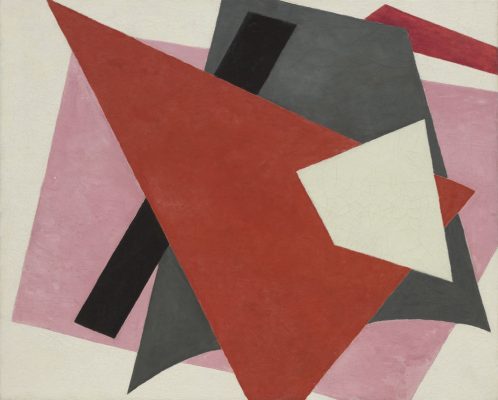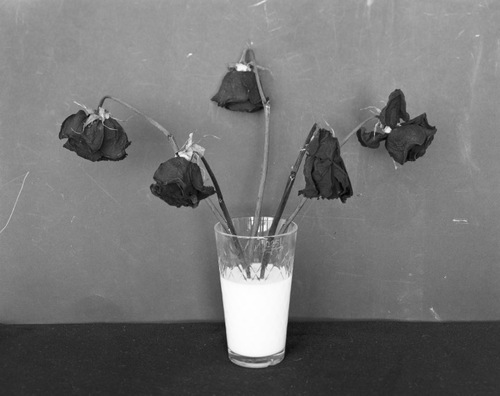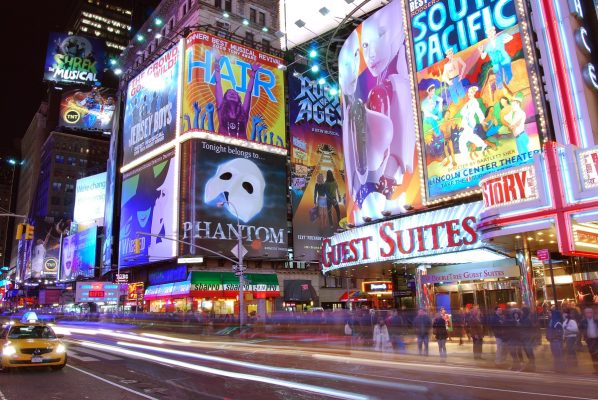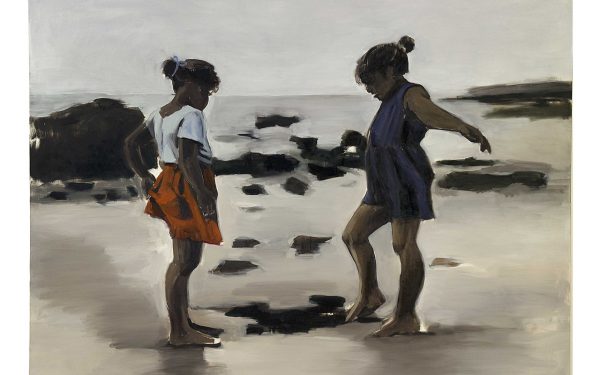Little can prepare you for the experience of reading Renee Gladman’s Ravickian quartet and encountering the oddity, humour, and singular intelligence of her mind. Gladman began writing the series in 2003, drawing on a private language she had invented with a friend. The linguistic game developed and eventually gave birth to Ravicka — a fictional city-state with an absurd, charming, and troubled local population.
I want to state from the outset that these novels remind me of little else I have encountered in contemporary literature. Ravicka has textual predecessors — Gladman overtly nods to Samuel Beckett, Anne Carson, and Julio Cortázar — but immersion in Ravicka feels, somehow, more like watching contemporary dance or experimental film than reading a novel. Absurdity abounds, non-sequitur is employed liberally, and syntax seems more significant than setting or plot. Nonetheless — and herein lies Gladman’s achievement — these novels are provocative and profound.
To date, four of Gladman’s ten published works are set in Ravicka. The experimental collection of essays Calamities (2016) and a new monograph of Gladman’s drawings, Prose Architectures (2017), complement the Ravicka project, but her first novel, Event Factory (2010), remains the best port of entry into this extraordinary city. ‘From the sky there was no sign of Ravicka. Yet, I arrived; I met many people. The city was large, yellow, and tender,’ writes the unnamed protagonist, a linguist who arrives in Ravicka when her plane fails to depart after a layover. The only novel in the series told from the perspective of a visitor from outside, Event Factory offers an introduction to Ravicka’s foreign culture and strange landscape, where Earth’s physical laws are either suspended or queered.
Mostly, the novels offer the mere suggestion of a plot. The Ravickians, the second in the series, ostensibly tells the story of a famous novelist trying to cross the city to attend her friend’s poetry reading. But it is more a meditation on the impossibility of translation — a fugue-like discourse on community, longing, poetics and friendship taking place on moving trains and in fields, and closing with twelve fractious chapters of polyvocal conversations, taking place on Ravicka’s bridges. Ravicka functions as a construct within which Gladman can pursue ideas around language, embodiment, and the phenomenological experience of space. Her writing is eminent in its attention to the materiality of sentences, investing each syntactic unit with the capacity to build an imaginative world: Ravicka’s landscape is a fully-realised invention, with its own language and culture.
In this world, almost every protagonist is a writer — if writing goes beyond the traditional modes of authorship and encompasses drawing, gesture, and the trajectory of a body through a city. Ravicka is a city that is itself written — a lucid fiction, born of a language game and populated by subjects who must write themselves into being. ‘I was trying to tell you what it means to see a city that itself sees, that looks out of its structures toward some imagined place, some activating force,’ writes a protagonist in Houses of Ravicka, the recently published fourth instalment in the series.
Organised in two parts, Houses of Ravicka is by far the most plot-oriented of the Ravickian novels — which is not to say that it is the most accessible. In it, the city is still in the throes of the national crisis described in Ana Patova Crosses A Bridge, in which the erosion of each district’s architecture threatens the Ravic language, provoking melancholy, disorientation, and substance addiction in its citizens. Part One is told from the perspective of the Comptroller, a public servant named Jakobi tasked with monitoring Ravicka’s drifting buildings. As we discover in the previous novels, Ravicka’s topography is fluid. ‘Venturing into almost any city space puts you in the position of having to face the facts about Ravicka’s structural problem,’ explains Jakobi, ‘an excess of locations out of sync with their axiohexmetric origins, causing the city to rotate.’
Comptroller Jakobi — widely regarded as an authority on the phenomenon of roaming houses — is faced with a mystery. Two entangled houses have been dislocated. House No. 92 in Skülberg has disappeared while its ‘invisible counterpart’, House No. 32 Bravashbinder, remains ‘appropriately invisible’. If this plot sounds abstruse, Gladman’s games with quantum theory make it intentionally so: Ravicka’s structural reality can be observed, but not wholly explained or understood.
In Part Two we meet the inhabitant of the invisible house, cit Maholy. ‘I live here, and have done so for a decade,’ the tenant tells us, ‘in this spacious top-floor flat of seven rooms, this wall-less, invisible flat, and in all that time, I’ve gotten up, made coffee, dressed, and walked out the door. To leave an invisible structure is just as difficult as returning to one.’ Years beforehand, the inhabitant acquired a gift: an ability to cross ‘impossible thresholds’ by becoming especially sensitised to Ravicka’s structural reality, in which certain buildings embody a state ‘between visibility and invisibility’. Before reading Houses, I read Sarah Schulman’s The Gentrification of the Mind, a memoir and political commentary on the AIDS crisis in New York City, which explores the devastating consequences of the loss of an entire queer creative generation. Many of Schulman’s concerns — pertaining to race, gender, class, crisis, queerness, city life and imagination — run through Gladman’s work too, and Houses might function as a postmodern allegory of the devastations of gentrification. In the Afterword, Gladman describes her struggle to complete the work: ‘The revelation of Part Two was not only about finding an entry into architecture and developing notions for composing interior space; it was, on a profound level, a level on which one survives the atrocities of the political and social present, a way for me to put a pin in the map as to where I am in the world.’
In an overt sense, Renee Gladman herself emerges as the main protagonist of Houses. Her presence in the novel is subtly foreshadowed in Part One, as Jakobi’s gender identity flickers between male and female. Given the prominence of queer identities in Ravicka, one comes to assume the Comptroller is gender fluid. But it later becomes apparent that Gladman’s authorial voice is being superimposed on her protagonist. Gladman, in a very literal sense, is Jakobi — as well as the tenant of No. 32. ‘It was amazing to imagine your city was a novel, and that for you to walk around within it meant that you were in language, you were in a thinking text,’ writes the invisible tenant and/or Renee Gladman in Part Two. ‘I had been placed inside of something dreaming, its citizens dreaming, the novels we had all written dreaming.’
This element of self-reflexivity does not exist in the previous novels. It is Gladman who is mystified by Ravicka’s drifting buildings, which is also to say its strange fictive materiality. And it is also Gladman who valiantly attempts to cross ‘impossible thresholds’ in order better perceive, or descriptively contour, the ontological possibility that may be inherent in these fictive architectures: ‘Time was a machination of the earth turning and the buildings of Ravicka trying to do something that no other country was reported to have done; the city was a novel in progress. And everyone knew this. We spoke jokingly of ourselves as the “Novelians”; the banter gave us space. As long as the change was creative, was about some thinking mind going after new shapes, we reasoned, our bodies were safe. The city wouldn’t try to destroy our bodies; it needed us. It needed our habitation.’
There is an urgency to these books; an unavoidably political edge. These works are written in full consciousness of the violence and pressures of life in a neoliberal, late capitalist society, with the added implications of racism, class inequity, sexual oppression, and ecological demise. ‘You worried that the crisis was following you and, because of how closely it mirrored your thinking, that you were the crisis,’ writes Ana Patova in Enclosures. Ravicka is predicated on the imaginative possibilities of our world, therefore Ravicka’s crisis is also our crisis.
Gladman shows how by thinking about and within a state of crisis, it is also possible to think outside it. The Ravikian novels exalt the primacy of language to further imaginative possibility, which dominant and oppressive regimes would shut down. Gladman’s writing cleaves to the luminous. It slips through the gaps in our thinking to pluralise, queer, subvert, and mobilise. These books are strange but, through a bright and deft poetic obliquity, they shine an incomparable light onto our contemporary moment. With Ravicka, Gladman presents a space outside of our world which, read correctly, leads back into our core.




